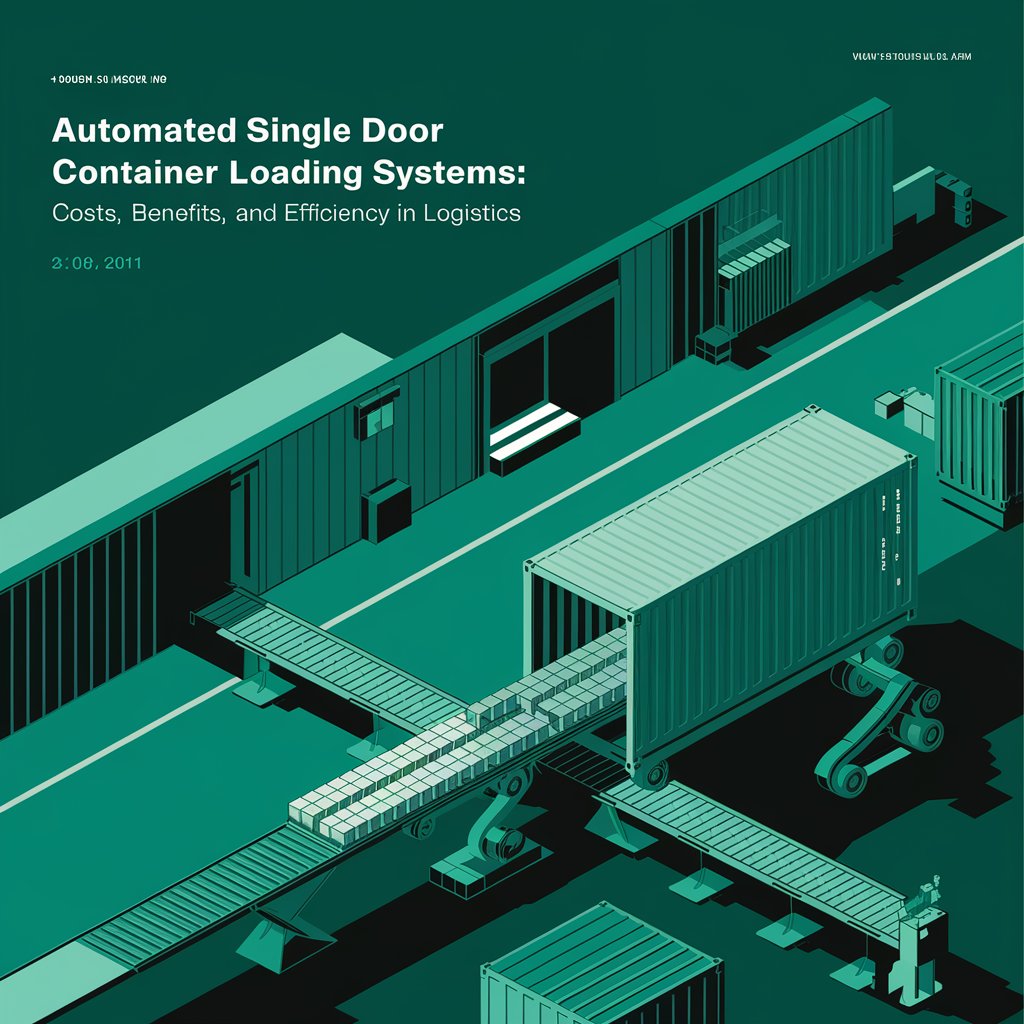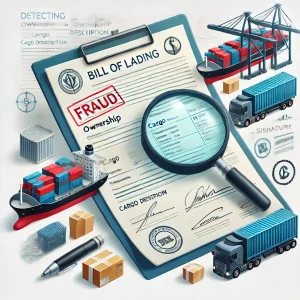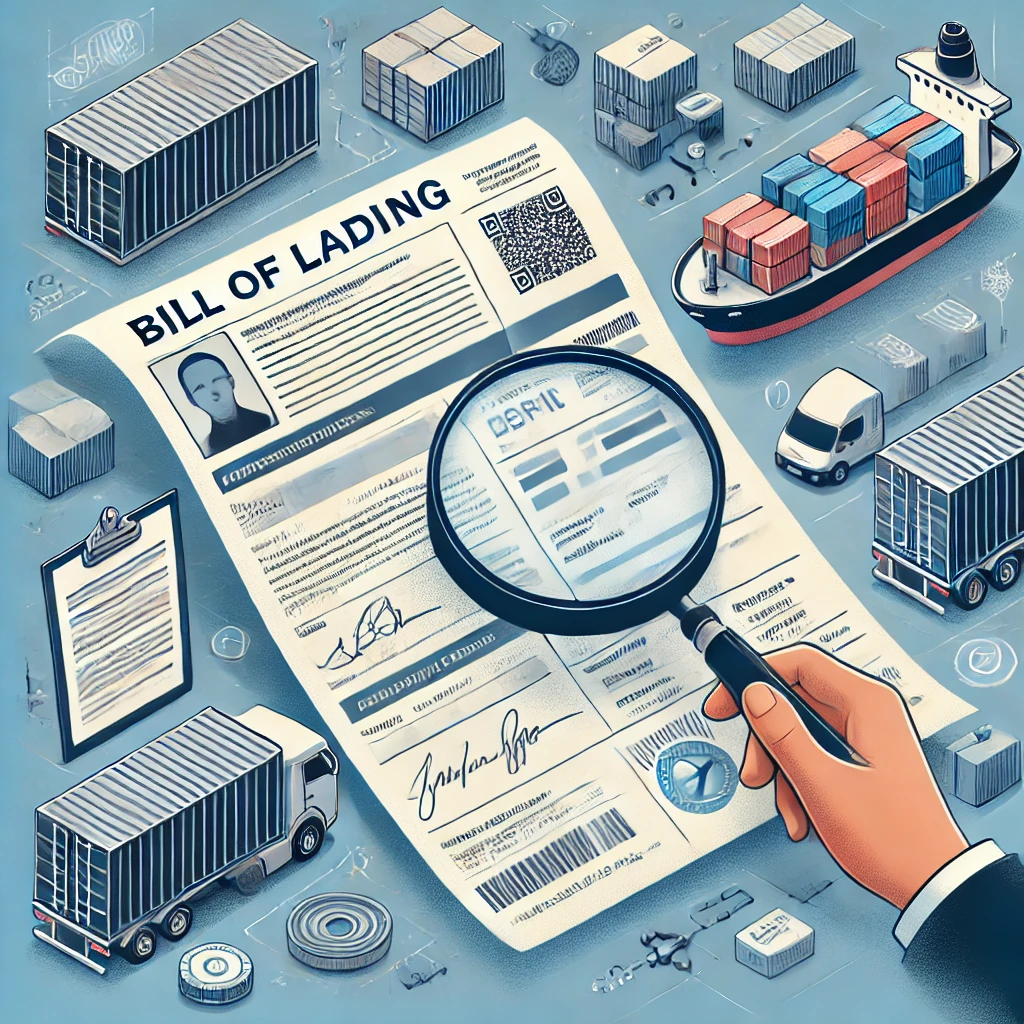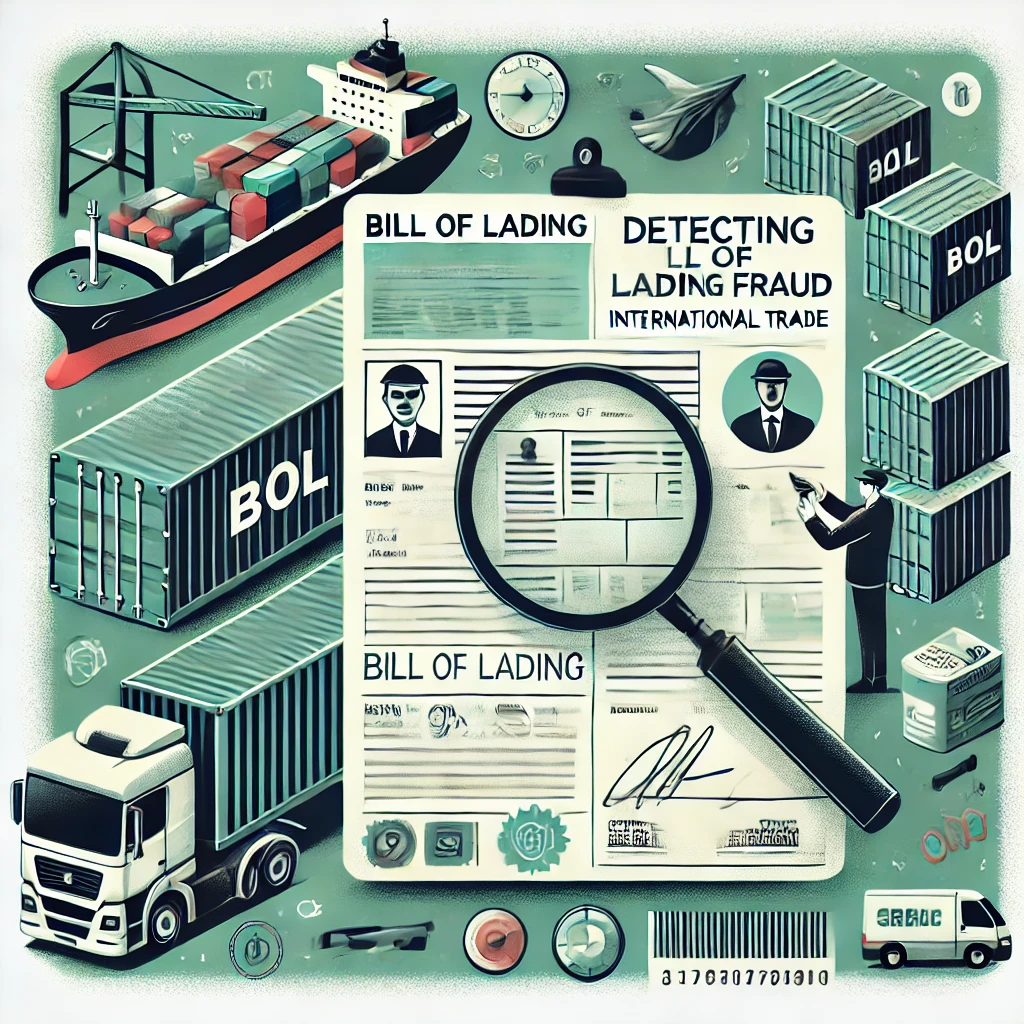How to Detect Bill of Lading Fraud: Key Signs and Prevention Tips

What is Bill of Lading Fraud?
Before delving into how to detect bill of lading fraud, it’s crucial to understand what it entails. Bill of lading fraud involves the falsification or tampering of BOL documents to misrepresent various aspects of a shipment, such as:
- Ownership of goods
- Nature or value of cargo
- Terms of transport
- Shipping dates or routes
Fraudsters may create entirely fake BOLs, alter existing documents, or misuse legitimate BOLs for unlawful purposes. The consequences of such fraud can be severe, including:
- Financial losses
- Legal disputes
- Damaged business relationships
- Regulatory penalties
Learning how to detect bill of lading fraud is thus crucial for protecting your business and maintaining the integrity of your supply chain.
Common Types of Bill of Lading Fraud
To effectively understand how to detect bill of lading fraud, it’s important to be aware of the various forms it can take. Here are some common types:
1. Document Forgery
This involves creating counterfeit bills of lading that appear genuine but contain false information. Forgers may use sophisticated techniques to replicate security features, making it challenging to detect the fraud without careful scrutiny.
2. False Endorsements
In this type of fraud, unauthorized parties may add signatures or stamps to transfer ownership of goods without proper consent. This can lead to the unlawful claiming of cargo at the destination.
3. Misleading Information
Fraudsters may alter key details on the BOL, such as:
- Understating the weight or value of goods to avoid higher fees or duties
- Changing the description of cargo to circumvent restrictions or tariffs
- Falsifying the origin or destination of goods
4. Double Financing Fraud
This sophisticated scheme involves using the same BOL to secure financing from multiple lenders, effectively obtaining funds for non-existent or already financed shipments.
5. Switch Bills of Lading
In this fraud, a legitimate BOL is replaced with a fraudulent one during transit, often to change the consignee or misrepresent the goods being shipped.
Understanding these types of fraud is crucial in learning how to detect bill of lading fraud effectively.

Key Signs of Bill of Lading Fraud
Knowing how to detect bill of lading fraud requires vigilance and attention to detail. Here are some red flags that should raise suspicion:
1. Inconsistent Details
When reviewing a BOL, look for discrepancies in:
- Cargo descriptions
- Weights and measurements
- Shipping dates and routes
- Vessel or carrier information
Any mismatches between the BOL and other shipping documents (like commercial invoices or packing lists) could indicate fraud.
2. Unusual Routing or Carrier Names
Be wary of:
- Shipping routes that don’t make logical sense
- Unfamiliar or suspiciously named carriers
- Ports of call that don’t align with the usual trade routes
3. Lack of Security Features
Authentic BOLs often include security measures such as:
- Watermarks
- Unique serial numbers
- Barcodes or QR codes
- Official stamps or seals
The absence of these features, or poorly replicated ones, could be a sign of forgery.
4. Unrecognized Signatures or Stamps
Pay close attention to:
- Signatures that don’t match those of known authorized personnel
- Unfamiliar company stamps or seals
- Missing or suspicious-looking verification marks
5. Overlapping Numbers
Be alert to:
- Duplicate BOL numbers
- Sequential numbers that don’t align with the issuing company’s usual numbering system
6. Poor Quality or Inconsistent Formatting
Look out for:
- Blurry text or logos
- Misaligned fields or inconsistent fonts
- Spelling or grammatical errors
While not definitive proof of fraud, these issues warrant further investigation.
Steps to Verify the Authenticity of a Bill of Lading
Knowing how to detect bill of lading fraud involves more than just spotting red flags. Here are proactive steps to verify BOL authenticity:
1. Cross-Check with the Carrier
Contact the issuing carrier directly to confirm:
- The BOL number is genuine
- Shipment details match their records
- The document was indeed issued by them
2. Inspect Security Features
Carefully examine the document for:
- Watermarks (use a light source to check)
- Holographic elements
- Micro-printing or other anti-forgery features
3. Authenticate Endorsements
Verify that:
- All signatures are from authorized personnel
- Company stamps or seals are genuine
- Any transfers of ownership are properly documented
4. Use Digital Verification Tools
Employ technology solutions such as:
- Online BOL tracking systems provided by carriers
- Blockchain-based verification platforms
- Digital signature verification tools
5. Compare with Original Documents
When possible, compare the BOL in question with known authentic BOLs from the same carrier or shipper to spot any inconsistencies.
6. Conduct Background Checks
If dealing with new parties:
- Verify the existence and legitimacy of the companies involved
- Check for any history of fraudulent activities or disputes
By following these steps, you can significantly enhance your ability to detect bill of lading fraud.

How to Prevent Bill of Lading Fraud
While knowing how to detect bill of lading fraud is crucial, prevention is always better than cure. Here are some preventive measures:
1. Implement Secure Documentation Practices
- Use BOL forms with built-in security features
- Implement strict control over BOL issuance and handling
- Establish a clear chain of custody for shipping documents
2. Transition to Electronic Bills of Lading (eBOLs)
Electronic BOLs offer several advantages in fraud prevention:
- Reduced risk of physical document tampering
- Enhanced traceability and auditability
- Improved security through encryption and digital signatures
3. Train Staff on Fraud Detection
- Conduct regular training sessions on how to detect bill of lading fraud
- Keep staff updated on the latest fraud techniques and prevention methods
- Encourage a culture of vigilance and reporting of suspicious activities
4. Conduct Regular Audits
- Perform periodic reviews of shipping documentation processes
- Analyze patterns in BOL usage and flag any anomalies
- Engage third-party auditors for an unbiased assessment
5. Establish Strong Relationships with Partners
- Work with trusted carriers and freight forwarders
- Implement rigorous vetting processes for new business partners
- Maintain open lines of communication to quickly address any discrepancies
6. Utilize Advanced Analytics
- Implement data analysis tools to detect unusual patterns or inconsistencies in shipping data
- Use predictive analytics to identify potential fraud risks before they materialize

The Role of Technology in Preventing BOL Fraud
Technology plays a crucial role in enhancing our ability to detect bill of lading fraud. Here are some technological solutions:
1. Blockchain Technology
Blockchain offers several advantages in BOL security:
- Immutable record-keeping
- Transparent tracking of ownership transfers
- Reduced risk of document tampering or forgery
2. Electronic Bills of Lading (eBOLs)
eBOLs provide:
- Real-time updates and tracking
- Automated verification processes
- Integration with other digital shipping documents
3. Advanced Analytics and AI
These technologies can:
- Analyze vast amounts of shipping data to detect anomalies
- Identify patterns indicative of fraudulent activities
- Continuously learn and adapt to new fraud techniques
4. Secure Cloud-Based Platforms
Cloud solutions offer:
- Centralized document management
- Enhanced access control and user authentication
- Real-time collaboration and verification capabilities
By leveraging these technologies, businesses can significantly enhance their ability to detect and prevent bill of lading fraud.

Conclusion
Understanding how to detect bill of lading fraud is crucial in today’s complex shipping and logistics landscape. By being aware of the common types of fraud, recognizing key warning signs, and implementing robust verification and prevention measures, businesses can protect themselves from the potentially devastating effects of BOL fraud.
Remember, detecting fraud is not just about protecting your own interests – it’s about maintaining the integrity of the entire supply chain and fostering trust among all parties involved in international trade.
Stay vigilant, leverage technology, and always err on the side of caution when dealing with shipping documentation. With the right knowledge and tools, you can significantly reduce the risk of falling victim to bill of lading fraud.
Enhance Your Fraud Detection Capabilities with Linbis
At Linbis, we understand the critical importance of secure and reliable shipping documentation. Our advanced logistics solutions include cutting-edge tools designed to help you detect and prevent bill of lading fraud effectively.
From secure document management systems to advanced analytics for fraud detection, Linbis offers a comprehensive suite of tools to enhance your shipping security. Explore our solutions today and take the first step towards a more secure, efficient, and trustworthy logistics operation.
Don’t let fraudsters compromise your business – partner with Linbis to stay one step ahead in the fight against shipping fraud.
